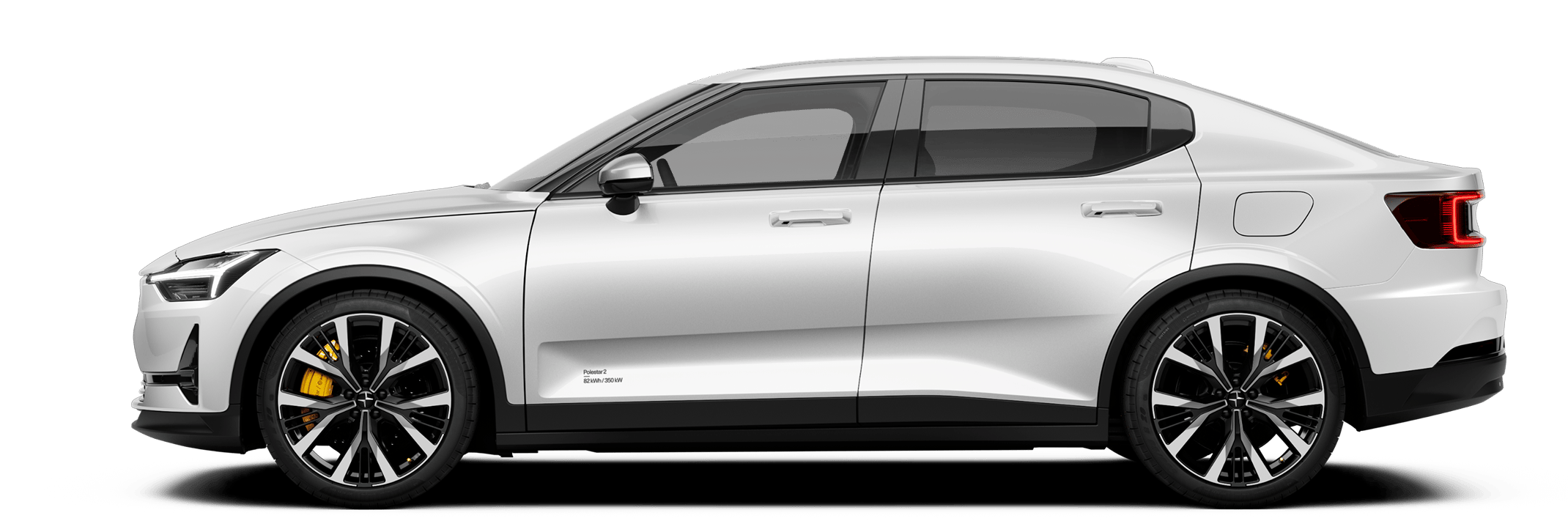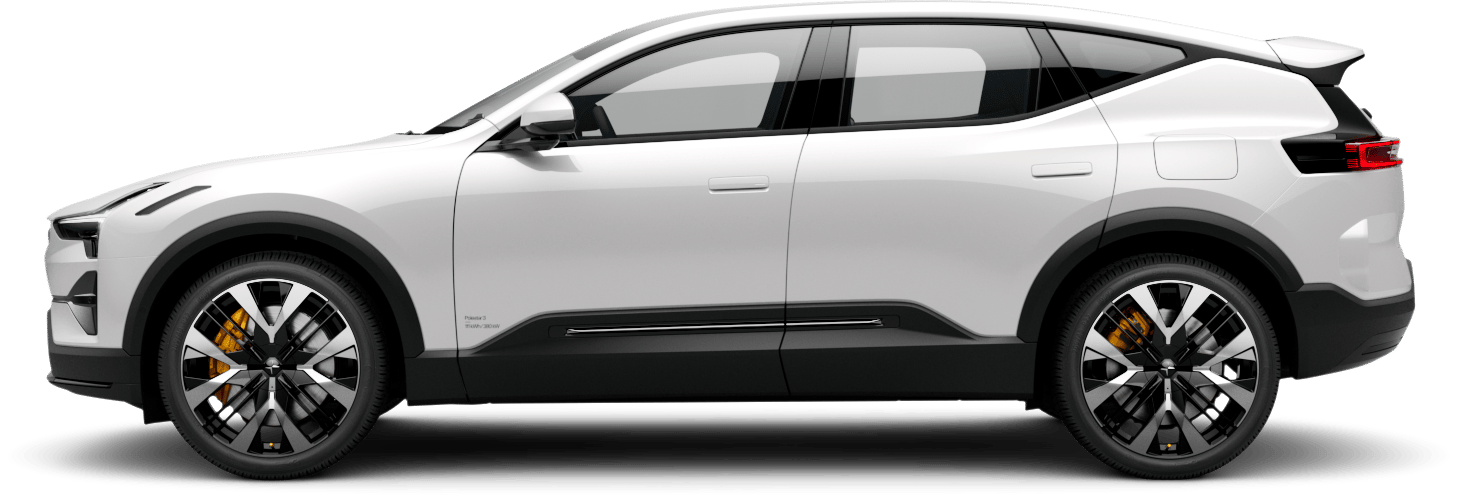Experiencing the sound system of Polestar 3
Great audio is an indisputable part of a good road trip. In a sense, it’s the driver’s fuel. From our early beginnings, we’ve aimed to make the moments behind the wheel of a Polestar some of the best of the day, with a driving experience that encourages taking the long route home. What completes the experience is Dolby Atmos®.
From AM to Dolby Atmos
Music in cars has long made commutes more bearable, road trips more fun, and traffic jams less tedious. Since the very first radio was officially installed in an automobile in 1924, audio has become a fundamental part of any car. Technology-wise, a lot has happened in the past century, but sound remains one of the most important aspects of any in-car experience.
In the past 100 years, in-car audio tech has evolved from transmitting AM radio to a fully immersive, cinema-like surround sound, with Dolby (the top-of-the-range audio experts) leading the way on immersive audio experiences. Partnering with Dolby for Polestar 3 means drivers can enjoy the world-renowned spatial sound technology, Dolby Atmos®.


In my work, I act as the bridge between art and engineering.
The dream job
No one knows more about the importance of the audio experience than Luis del Toro, Sound Engineer working with Dolby Atmos. For over a decade, Luis has recorded, mixed, and mastered audio in the Dolby universe of sound.
When we visited Luis at his workplace, we arrived at a beautiful old brick house, walls covered in green, clingy ivy. Luis showed us to a sparsely lit auditorium with red leather armchairs, a long row of mixing tables, and a big screen at the front. The room was speckled with loudspeakers. Luis’ workplace is essentially a theatre, and it is here that a lot of the mixing magic happens.
In his day-to-day, Luis works with artists who create music across a range of different genres. The studio speakers sound with everything from pop tunes to classical music, and in each of the projects, Luis’ role is to enhance, accentuate, and perfect the sound experience of the music. Or, as he puts it, “act as the bridge between art and engineering.”
Working in the Dolby universe
“When I made my very first mix in the 5.1 Dolby format, I was like ‘wow, this is amazing’,” Luis enthuses, recalling his first encounter with the Dolby universe.
Using the then latest Dolby tech (the 5.1 surround sound) Luis’ could separate the strings from the brass, and the flutes from the percussion, and place the sounds of the different instruments in a three-dimensional space to make the audio experience as close to reality as possible. “It was a great experience that I’ll never forget,” he remembers.
Some years later new tech emerged and Luis started working in Dolby Atmos. He was equally blown away by its features and still is to this day, but his love for sound began long before his Dolby ventures.
With grandma’ the opera singer, and grandpa’ the piano player, musical tunes were a common feature of the del Toro family home. And when his grandmother wasn’t singing, his mother and father would blast classical symphonies or recordings of live concerts on their Bowers & Wilkins 600 series loudspeakers.
Inspired by his family’s musical talent, he learned to play the guitar. His guitar playing career was short-lived, but a step towards finding his true passion in life. “Once I started playing the guitar, I soon discovered that I wasn’t a very good musician myself, so I started to think of other ways to work with music. When I first started recording, it was a disaster at first, but eventually I got better and quickly fell in love with the engineering part of music,” Luis explains. “And that’s how I ended up here, in the studio.”

The technology
The large, almost imposing mixing table in the middle of the studio, with its countless controls, hints at the range of possibilities that come with working in Dolby Atmos. It is this, Luis tells us, that he enjoys working with the most. “What’s so special about the system is that you can do so much with it. The different solutions are endless,” he comments.
In essence, removing the limits of creative expression by creating a spatial sound experience, is the very core of what Dolby has set out to do with Dolby Atmos. This leads us to the other big part of this technology — the spatial element that makes for a truly immersive sound experience.
In short, Dolby Atmos is a native format that offers a tool for creators to place and move sounds in a three-dimensional space, referred to as the “Dolby box” in spatial audio lingo. Picture a box in which you can place beats, instruments, vocals – top left, bottom right – anywhere you like (gravity is not a factor in this universe). This allows the creator more precision, space, and freedom to tailor the mix in their unique style. Pair this tech with Bowers and Wilkins speakers, like in Polestar 3, and the listener will feel like they’re inside the music.

It’s like a cinema on four wheels.
Polestar 3’s premium audio system
One of the best ways to experience Dolby Atmos may be in a car, and we’ll tell you why. Think about the Dolby box again (the three-dimensional space in which objects are placed to create an immersive experience). Now think about the interior space of a car… Need we say it? It’s basically the perfect fit. EVs are quiet, insulated, with speakers all around. Well, Polestar 3 is. 25 Bowers and Wilkins speakers to be exact, including their famous Tweeter-on-top. “It’s like a cinema on four wheels,” Luis says, summarising it better than we ever could.
Another important part of any audio experience, of course, is the quality (and quantity) of the speakers. Luis, a software man himself, is the first to admit that great hardware is essential to a premium sound experience. “The integration of sound engineering and speakers in Polestar 3 is just fantastic,�” Luis comments. “Stepping into Polestar 3 is like entering another world. When I heard my mixes for the first time in the car, it was like I was sitting in the studio. My first impression was that I could definitely make a mix from this car.”


A top priority for us has been to use technology in a way that allows the creative side of audio to shine. Combining tech and emotions has been very important in this process.
The marriage between software and hardware
One person who has been working hard to marry software and hardware together is Polestar’s Hans Bleckert, Connected Car Manager. “My mission is simple: give our customers the best sound experience. And to do so, we’ve partnered with the very best in the industry,” he comments.
He appreciates that his role is that of the ‘tech guy,’ making sure both software and hardware are up to standard, but what he’s enjoyed most about this project is realising the art of great sound. “I’m a tech guy, but this process has very much been about the beauty and love of music. A top priority for us has been to use technology in a way that allows the creative side of audio to shine. Combining tech and emotions has been very important in this process,” Hans admits.
The emotion that music conveys is important to Hans also on a personal level. For many of us, the commute to and from work is one of the few instances in a day in which we get to enjoy some alone time. As a music lover and auto guy, Hans is the same and enjoys time alone spent in the car.
Hans is probably one of the first people to get the full audio experience in Polestar 3. It was in a prototype car some years ago that he sat down and heard the mock-up sound system. Kraftwerk was played and he was blown away. He says that he could try to explain the feelings in more detail but he wouldn’t do it justice. People need to try it on their own. He does confess, however, that goosebumps were involved.
Hans leaves us with one final piece of advice, to make sure to listen to music in an app that supports Dolby Atmos. TIDAL support this format and is available through the Google Play store.
Book a test drive (or a test listen) of Polestar 3 here.







